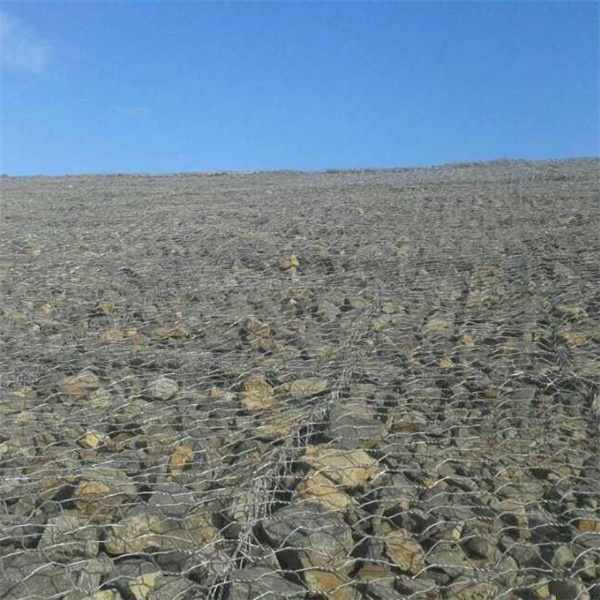Nov . 09, 2024 07:49 Back to list
Understanding Gabion Structures and Their Applications in Construction and Landscaping
Understanding Gabions Definition, Factory Production, and Applications
Gabions are a fascinating and versatile construction material that has become increasingly popular in civil engineering, landscaping, and environmental protection. Derived from the Italian word gabbione, which means big cage, gabions are essentially wire mesh containers filled with stones, rocks, or other materials. Their unique structure and properties lend themselves to a variety of applications, offering both functional and aesthetic benefits.
Definition of Gabions
Gabions are essentially wire baskets or cages made from double-twisted steel wire mesh, which is then filled with natural stones or other suitable materials. They vary in size and shape, depending on their intended use. Gabion walls and structures serve as retaining walls, erosion control barriers, sound barriers, and architectural features in landscaping projects.
One of the primary advantages of gabions is their permeability. Unlike traditional concrete structures, gabions allow for water drainage, thereby reducing pressure build-up behind the wall. This characteristic helps prevent erosion and other related issues, making gabions particularly appealing for use in areas with high moisture content or heavy rainfall.
Gabion Factory Production
The production of gabions takes place in specialized factories equipped for wire mesh fabrication. The manufacturing process involves several steps
1. Material Sourcing High-quality steel wire is sourced, often galvanized to prevent rusting and corrosion. This ensures the durability and longevity of the gabions, allowing them to withstand harsh environmental conditions.
2. Mesh Fabrication The wire is twisted into hexagonal mesh patterns that provide structural integrity. This mesh can vary in size and thickness based on specification requirements.
3. Cage Assembly The fabricated mesh is then cut and assembled into cages. These cages are usually secured with additional wire ties at the edges to ensure they hold together during filling.
4. Quality Control Before gabions leave the factory, they undergo rigorous quality control checks. This includes testing for tensile strength, ensuring that the cages are free of defects, and confirming that they meet industry standards for safety and durability.
gabion definition factory

5. Logistics and Distribution Finished gabions are packaged and transported to various construction sites or projects. Factories often work with distributors to ensure timely delivery.
Applications of Gabions
Gabions offer a multitude of applications across various fields. Some key uses include
- Erosion Control Gabions are often used to prevent riverbank and slope erosion. Their design allows for water to flow through while providing stability.
- Retaining Walls They serve as effective retaining walls in landscaping and civil construction, providing both support and an aesthetically pleasing look to gardens and outdoor spaces.
- Noise Barriers Gabions can also serve as sound barriers along highways or busy roads. The mass and density of the stones help absorb sound, making surrounding areas quieter.
- Architectural Features In landscaping, gabions can be designed as decorative features, such as seating areas, planters, or privacy screens. Their natural look blends well with outdoor environments.
- Flood Control In regions prone to flooding, gabions can be strategically placed to redirect water flow and mitigate flood damage.
Conclusion
Gabions represent a blend of functionality and versatility, making them an excellent choice for various construction and landscaping projects. With their unique properties, gabions contribute to sustainable engineering solutions while also offering aesthetic value. Understanding the definition, production process, and applications of gabions highlights their importance in modern construction practices. Whether for erosion control, flood prevention, or decorative purposes, gabions continue to play a vital role in shaping our built environment. As technology advances, the potential uses for gabions could expand even further, reaffirming their place in both civil engineering and environmental stewardship.
-
Why PVC Coated Gabion Mattress Is the Best Solution for Long-Term Erosion Control
NewsMay.23,2025
-
Gabion Wire Mesh: The Reinforced Solution for Modern Construction and Landscape Design
NewsMay.23,2025
-
Gabion Wall: The Flexible, Seismic-Resistant Solution for Modern Landscaping and Construction
NewsMay.23,2025
-
Gabion Wall Solutions: The Durable, Decorative, and Affordable Choice for Every Landscape
NewsMay.23,2025
-
Gabion Basket: The Durable and Flexible Alternative to Traditional Retaining Walls
NewsMay.23,2025
-
Gabion Basket: The Proven Solution for Slope Stability and Flood Control
NewsMay.23,2025
-
Versatility of Chain Link Fence Gabion
NewsMay.13,2025






